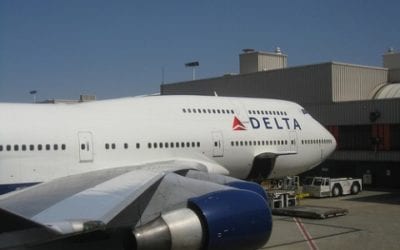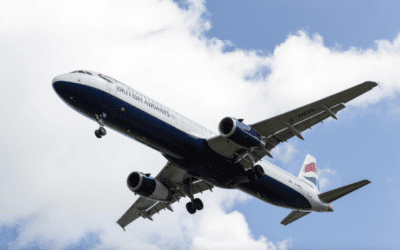
The Department of Transportation (DOT) took a major stand on the side of consumers and competition with the latest ruling regarding take-off and landing slots at Washington Reagan (DCA) and New York LaGuardia (LGA). Their ruling that approves the deal, but only with divestiture of these precious slots, is a landmark decision.
This action seems relatively innocuous from the point of view of normal travelers, however, it changes the game and fires a shot across the bow of business-as-usual practices at legacy carriers.
It is just this kind of decision that has been made behind bureaucratic closed doors for decades that have profound effects on airline ticket prices and airline competition. Discussions of landing slots rarely would make the newspapers and certainly, even today, are relatively arcane and hard to explain to everyday fliers. But, the DOT decision, in terms of the airline world, is dramatic. It is turning back decades of precedent and taking back control of the air transportation grid that had been relinquished to the airlines over time.
Let’s take a quick look at the history of this slot swap.
Delta and US Airways, back in August of 2009, proposed exchanging Delta slots from DCA with US Airways in return for slots from LGA.
In February 2010, the DOT protested and issued a requirement that Delta and US Airways divest themselves of slots to prevent airport dominance.
in March, Delta and US Airways made a counter proposal to DOT suggesting a smaller divestiture with a controlled sale of their slots to airlines selected by Delta and US Airways.
This Monday (May 4th), DOT approved the slot swap, but with their original caveat that 14 slots at National and 20 at LaGuardia would have to be divested. Plus, DOT noted that the slots must be divested in a “blind bid process.” DOT further noted, the slots must be sold “in bundles large enough to ensure that a purchaser would have a sufficient number of slots to provide meaningful new competition.”
Delta and US Airways are not happy with losing control.
In a joint statement, the airlines announced, “Upon review of the just-issued order, we believe the DOT and FAA’s decision is inexplicable and has clearly exceeded their statutory authority. We intend to appeal this ruling to the U.S. Court of Appeals.”
These machinations all beg the question, “Who really controls these slots.” Some comments to earlier columns on this subject indicated that the airlines purchased these slots and they they have invested millions in these take-of and landing slots. Not so.
I went to the FAA and asked whether any airline had ever paid the FAA for take-off and landing slots. The answer was an unambiguous, “No.” The slots have been parceled out over time, based on airline needs and airport space. Only, in recent airline history, have slots at specific airports become hot commodities. The FAA and DOT have allowed carriers to sell slots to each other, however, the FAA and DOT are still the controlling authority when it comes to managing the airline transportation grid.
When Delta and US Airways first proposed their slot swap, the Consumer Travel Alliance (CTA) sent a direct email to the FAA office that was charged with reviewing the slot swaps. In their letter, the CTA urged the department to take into consideration competitive concerns and look at this transaction from the point of view of the airline consumers.
These slot machinations should also be examined in light of how airline alliances are using their ability to cobrand flights as a means to claim equal service while actually reducing flights. We need to keep in mind that the airlines have no antitrust immunity when it comes to domestic operations.
I urge you to keep passengers in mind as this decision moves forward. The media, to this point has only examined the benefits these swaps will bring to the airlines. Consumers have been forgotten. I trust that the FAA deliberations will include a close look at how these proposed changes impact the flying public.
DOT’s actions have clearly shown that the department is on the side of consumers and competition.

Charlie Leocha is the President of Travelers United. He has been working in Washington, DC, for the past 14 years with Congress, the Department of Transportation, and industry stakeholders on travel issues. He was the first consumer representative to the Advisory Committee for Aviation Consumer Protections appointed by the Secretary of Transportation from 2012 through 2018.



